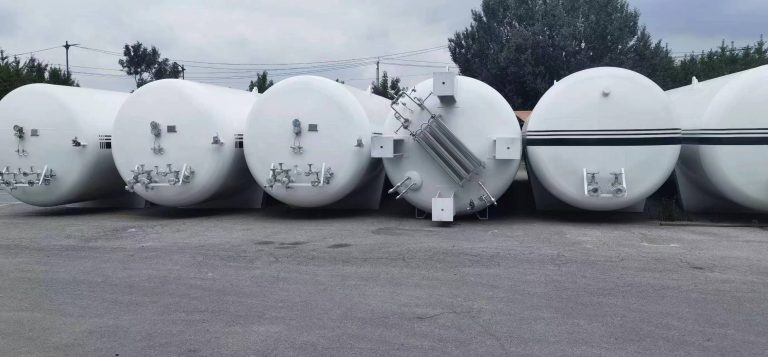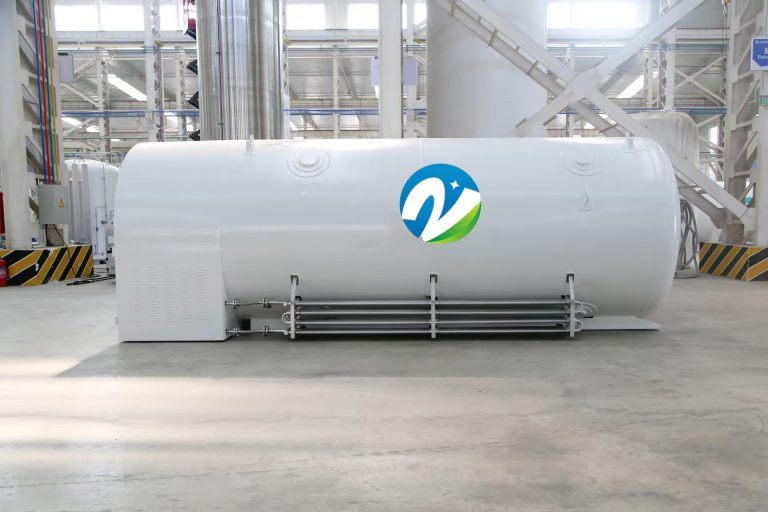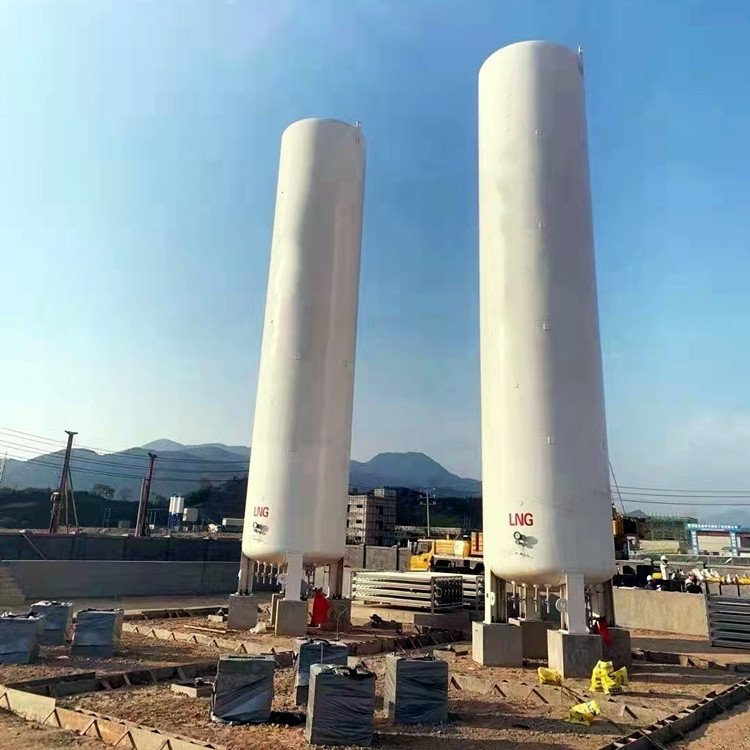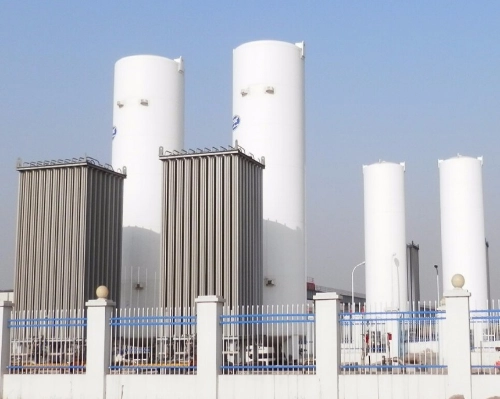Natural gas has the incomparable advantages of other energy sources such as cleanness, environmental protection, high calorific value, and non-toxicity, and has been widely used in national economic life. However, due to the lack of long-distance pipeline construction capacity in my country, many counties, towns, and large industrial enterprises far away from cities cannot enjoy the convenience brought by natural gas. The emergence of liquefied natural gas (LNG) has solved such problems. LNG is obtained from natural gas after purification, cooling separation, liquefaction and other processes. Compared with natural gas, it has the advantages of flexible transportation and high storage efficiency. 1m³LNG (liquid state) ≈ 600m³ natural gas (gas state) effectively improves the economy of storage and transportation It provides the possibility for long-distance transportation. To use LNG, it is necessary to build an LNG gasification station to convert the liquid into a gaseous state before it can be used. The main function of the LNG gasification station is to store the transported LNG into storage tanks, and after gasification, pressure regulation, and metering, transport it into the gas pipeline network for use by users. Ambient air vaporizer is the key equipment for converting LNG into natural gas.
Vaporizer Type
Vaporizers are divided into open-frame vaporizers, immersed combustion vaporizers, air-ambinet vaporizers, and water-bath vaporizers according to different heat medium sources, gasification volume, site conditions, and structural forms.
Among them, the heat source of the open-frame vaporizer is mainly seawater, and the gasification amount needs to be adjusted appropriately according to environmental changes, and the initial investment is relatively large, and the later maintenance cost is low. However, this type of vaporizer has certain requirements for seawater quality and is suitable for A large LNG gasification station built by the sea.
The submerged combustion vaporizer uses the heat generated by fuel combustion to exchange heat with LNG. It has high thermal efficiency, low initial investment, and a small footprint, but high operating costs. It is suitable for LNG gasification stations in emergencies or temporary peak regulation.
s use air as a heat source, which is sensitive to the environment. It is easy to freeze in low-temperature environments, which affects the gasification effect. It occupies a large area, but the initial investment and later use and maintenance costs are very low. It is currently widely used. It is used in peak shaving stations of urban gas enterprises and LNG gasification stations of general industrial users. The water-bath vaporizer uses hot water as the medium to conduct heat exchange. It needs to be used with heating equipment, but it occupies a small area and has a fast heat transfer speed. It is often used in places with limited space conditions and insufficient funds. Now it is mostly used for Supplementary use behind the air-temperature vaporizer in series .
Air ambient vaporizer introduction
The main structure of the air ambient vaporizer is that the heat-conducting tubes with star-shaped fins are assembled together. When the low-temperature liquid flows into the vaporizer, heat exchange occurs between the surrounding air and the low-temperature liquid in the star-shaped fin heat-conducting tubes, and the low-temperature liquid absorbs The heat in the air, used as the energy source for vaporization, vaporizes the liquid. The star-shaped fins welded outside the heat pipe are mainly to increase the heat exchange area and improve the efficiency of heat exchange. The air-heated vaporizer only absorbs heat from the air during operation, does not need additional energy, does not use electricity, does not use fire, and avoids many dangerous factors in terms of fire and explosion protection, and is not limited by power supply. It provides the necessary guarantee for the uninterrupted and safe operation of the chemical station. And in the later operation process, there is almost no operation and maintenance costs. However, the gasification effect of the air-heated vaporizer is greatly affected by the ambient temperature, air volume and wind speed, and the surface is prone to frost.
Air-heated Vaporizer Selection
According to conventional studies, air ambient vaporizers are generally set up in two groups, one for use and one for backup, but in practical applications, the gasification capacity determined according to conventional research often cannot meet the requirements of use. The reason is that the gasification capacity of the vaporizer is calculated according to a variety of factors such as specific temperature, humidity, climate wind direction, wind speed, installation location, light conditions, etc., but in the actual operation process, in addition to the installation position is fixed, other factors affecting the gasification capacity are constantly changing. Therefore, it is recommended that the design and selection of air ambient vaporizers should fully consider the following influencing factors:
- Peak hour gas consumption
Peak hour gas consumption is the most important factor in choosing the vaporizer type. If supplying urban gas transmission and distribution pipeline network, the total gasification capacity is recommended to be determined according to 1.2~1.5 times of the peak hour gas flow of the pipeline network. If supplying industrial users, the total gasification capacity The gasification capacity is determined according to 1.5~2 times the peak hourly gas flow rate of the user to ensure a certain surplus.
- Climatic condition
Ambient temperature, sunshine intensity, wind speed and other factors affect the gasification capacity by affecting the efficiency of heat exchange. Because the heat exchange efficiency of the air ambient vaporizer depends on the surrounding ambient temperature, the intensity of sunlight and the wind speed, if the ambient temperature is too low, the intensity of sunlight will not be sufficient. If there is no wind, a thick white mist of water vapor will form around the gasifier, seriously affecting the gasification capacity, which is especially obvious at night and early morning when there is no wind in the area north of the Yangtze River .

- Installation method
Air ambinet vaporizers are normally installed in the open air, and are divided into vertical and horizontal types according to the installation form. The vertical structure occupies a small area, but it is limited by the degree of wind and seismic intensity, and it is difficult to clean the frost on the surface in the later stage.
The horizontal structure is stable, but it occupies a large area, and it is mostly used for the unloading of gasification stations and the self-pressurization system of storage tanks .
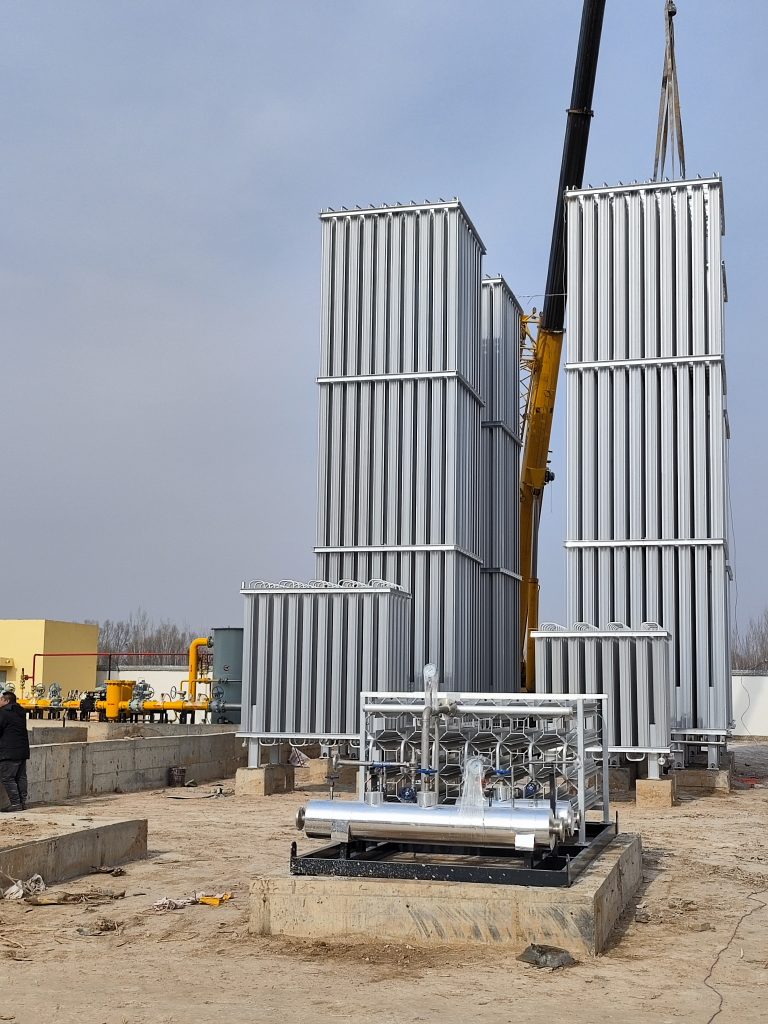
- Other factors
The number of fins is also a very important factor in the selection of vaporizers. Air ambinet vaporizers mainly exchange heat with the environment through fins. The area and number of fins directly affect the heat transfer and gasification volume. 8-fin structure, and 12-fin and 14-fin structures, but the fin area increases and the number increases, which puts forward new requirements for structural design and casting process .
Wanna more details or send inquiry for this ? Just click bottom button



